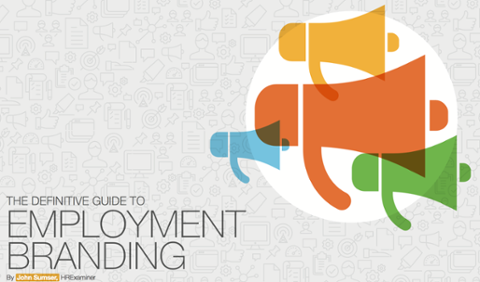
In the new Definitive Guide to Employment Branding, recruiting expert John Sumser breaks down effective Employment Branding (EB) for companies large and small. Here’s a case study from the e-book that shows how even a single individual can have a huge influence on a firm’s branding and recruiting efforts: Tina Williams solves a very tough problem every day. As the Director of Talent Acquisition at CenturyLink, she recruits for over 400 locations from an office in Northeast Louisiana, near the Arkansas border. Her messages about working for the company have to be tailored and disseminated differently in each place. For each category of worker in each location, she prepares nuanced individual materials that describe the company in ways that matter in that locale for that profession. She specializes in “working closely with business leaders to translate business strategies into human capital needs and then delivering programs and services to meet those needs.” Or as she says: “We tailor (segment marketing) from skill sets to geography to demographics. Messaging is tailored and it gets more so if the position is hard to fill. You change messaging and tactics based on the position.” For some, the challenge would be daunting. Since Williams cut her teeth on trench-level marketing for the same firm, she almost intuitively understands the 400 markets and their nuances. “We look for every kind of talent everywhere,” she says. She worked in marketing at her company for 16 years before being promoted to run the Talent Acquisition Department. “We have a separate organization that focuses on employment marketing and branding. We hire from entry level to multiple degree technical skill set,” she says. “Because we hire so many who are so different and the name is new, we knew we had to introduce or reintroduce ourselves as an employer of choice.” That recruiting problem required a branding solution. When the company decided to build a recruiting team, step one was to develop a staffing operation (all tactics, no strategy). Step two was the establishment of a separate employment marketing and branding initiative. Last year, she hired an Employment Branding agency to help with continuous improvement. The EB firm had a proven track record. She recruited someone from the company’s marketing department to manage the contract. When asked if EB reduced her recruiting costs, she says: “You can’t always look at this from a pure cost perspective. Our goal is to hire the highest quality people. I am sure that our approach gets us there. We can show it with evidence from our process. But, no, I can’t point to a direct cost savings.” One really important key is internal support. “Brett Blair, our VP of Talent Acquisition, made it possible by removing roadblocks and making sure I had the resources I needed,” she adds. “He coached and supported our team at every step.” About the most important things to do, she immediately began raving about the quality of her team. Then she outlined a basic process:
- First, you must identify and understand your audience.
- Second, you must tailor your messages for each audience.
- Third, you must use different tactics for each market, tailored to your goals.
- Fourth, use your leverage. My employees work in a regulated industry. That makes knowing where to find them easier.
- Fifth, take the material through the same process that any other marketing message gets.


